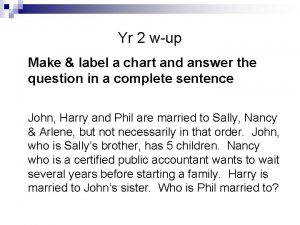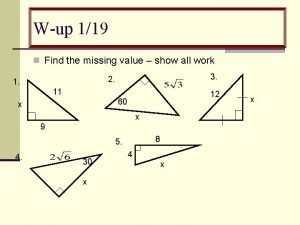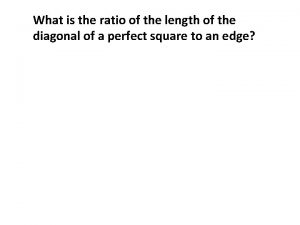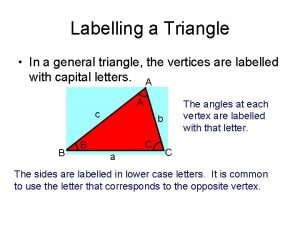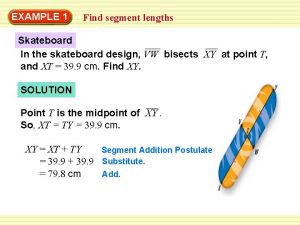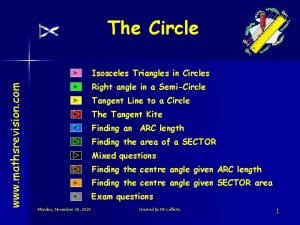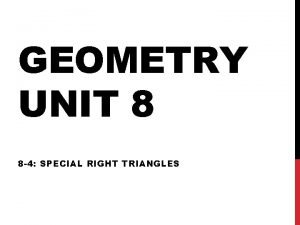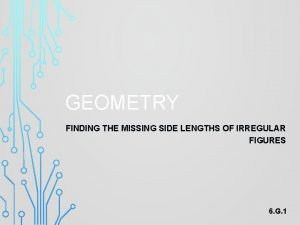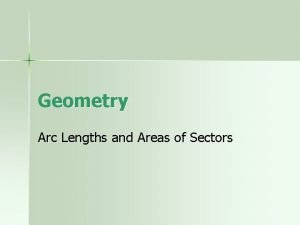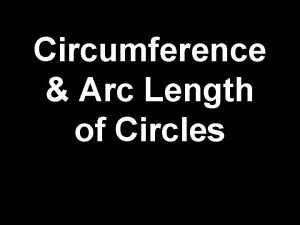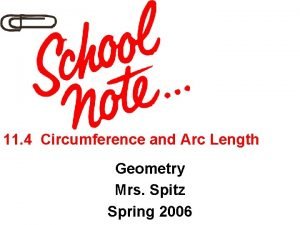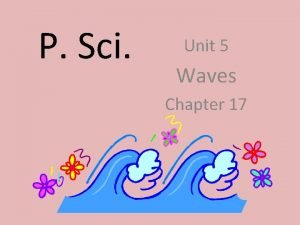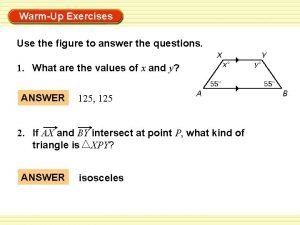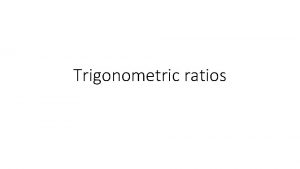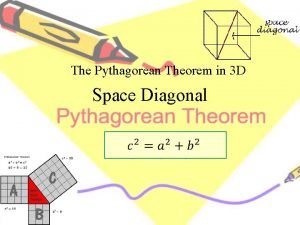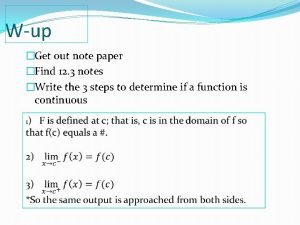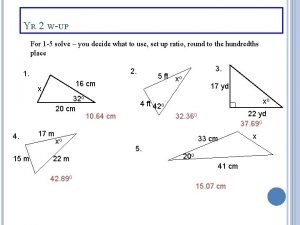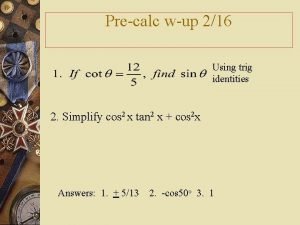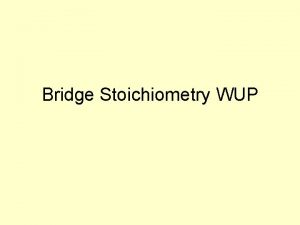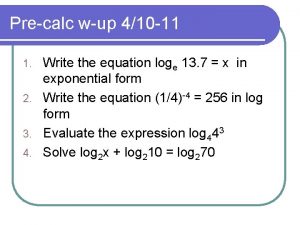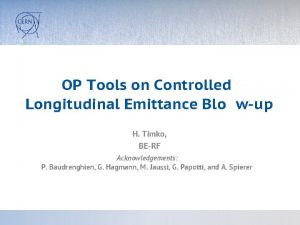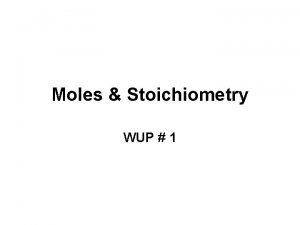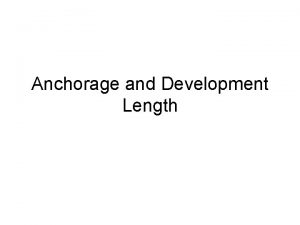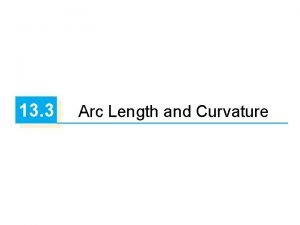Wup find the length of x and y


















- Slides: 18

W-up find the length of x and y 1. 3. 2. 3 12 11 5 7 6 8 4 1. X = 2 y = 1 2. x = 11 y = 7 3. x = 6 y = 3 18

Shape Geometry 4. 1. 2: Visualize solids and surfaces in 3 dimensional space when given 2 -dimensional representations and create 2 -dimensional representations for the surfaces of 3 dimensional objects

Some basic vocabulary you should know! A Polyhedron is a solid formed by polygons that enclose a single region of space. face base A face is the flat polygonal surfaces of the polyhedron In a solid prism there will be a maximum of 2 identical faces called bases.

Words to know continued… A lateral face is the polygonal faces that are not bases. vertex edge Lateral face base An edge is a segment where two faces intersect. A vertex is the point where three or more edges meet.

A couple more… You name prisms and pyramids by the name of their base. A prism is special type of polyhedron, with 2 faces called bases, that are congruent, parallel polygons. Let’s draw some prisms

Hang in there… A pyramid is special type of polyhedron they have only one base, the other faces are lateral faces that meet to form the lateral edges. The common vertex of the lateral faces is the vertex of the pyramid. Pyramids are classified by their bases Triangular Pyramid: Square Pyramid: Pentagonal Pyramid:

But… what about cylinders, cones and spheres? Cylinders, cones and spheres are also geometric solids. They have curved surface. A cylinder has two bases that are circles. A sphere is the set of all points at a given distance from a given point (center). A cone has a circle base, the vertex is perpendicular to the base

Almost done… When a solid is cut by a plane the resulting two-dimensional figure is called a cross-section. A net is a two-dimensional pattern that you can cut and fold to form a three-dimensional figure.

Investigate 3 -D shapes In groups of three get the following supplies: n 1 box of floss n 1 mound or jar of clay n 1 lab write-up n 1 set of nets

Part 1: Investigating faces Part 2: investigating Nets n n Each group will build a different solid. Use the lab sheet for directions. Include all drawings on the lab write-up Be prepared to share with the class.

Platonic Solids n A Platonic solid is a polyhedron all of whose faces are congruent regular convex polygons*, and where the same number of faces meet at every vertex.

Why are there only five Platonic Solids n The Greeks recognized that there are only five platonic solids. But why is this so? n The key observation is that the interior angles of the polygons meeting at a vertex of a polyhedron add to less than 360 degrees.

Platonic Solids n n n Tetrahedron: Three triangles at a vertex: 3*60 = 180 degrees Octahedron: Four triangles at a vertex: 4*60 = 240 degrees Icosahedron: Five triangles at a vertex: 5*60 = 300 degrees Cube: Three squares at a vertex: 3*90 = 270 degrees Dodecahedron: Three pentagons at a vertex: 3*108 = 324 degrees Note: Six triangles: 6*60 = 360 degrees Four squares: 4*90 = 360 degrees Four pentagons: 4*108 = 432 degrees Three hexagons: 3*120 = 360 degrees So there are only five Platonic Solids!

Octahedron Tetrahedron Icosahedron Cube Dodecahedron

Regular Solids n n There are nine regular solids: the five Platonian and the four polyhedra described by Kepler-Poinsot. Each face, apex and angle on each respective solid is the same.

Kepler-Poinsot Solids The four regular non-

Visualizing solids n http: //illuminations. nctm. org/Activity. Detail. aspx? id=70 Summary: What is a net? How can we use nets to better understand figures? What do cross-sections tell us about the figure?

Homework 1. 8 page pg 78 # 19 -22 AND page 83 # 1 -6, 13 -17, 20 -21
 Wup warszawa
Wup warszawa Shou wup
Shou wup Show wup
Show wup Shou wup
Shou wup Wup szczecin
Wup szczecin Wup szczecin
Wup szczecin What is the ratio of the length of to the length of ?
What is the ratio of the length of to the length of ? Labelling triangles
Labelling triangles How to find segment length
How to find segment length Formula for the length of an arc of a circle
Formula for the length of an arc of a circle 8-4 special right triangles
8-4 special right triangles Perimeter of irregular shapes with missing sides
Perimeter of irregular shapes with missing sides Find the missing sector areas and arc lengths
Find the missing sector areas and arc lengths How to find the length of an arc
How to find the length of an arc Arc length corollary
Arc length corollary How to find the length of a wave
How to find the length of a wave Answer
Answer Zishyp
Zishyp How to find the length of a space diagonal
How to find the length of a space diagonal

